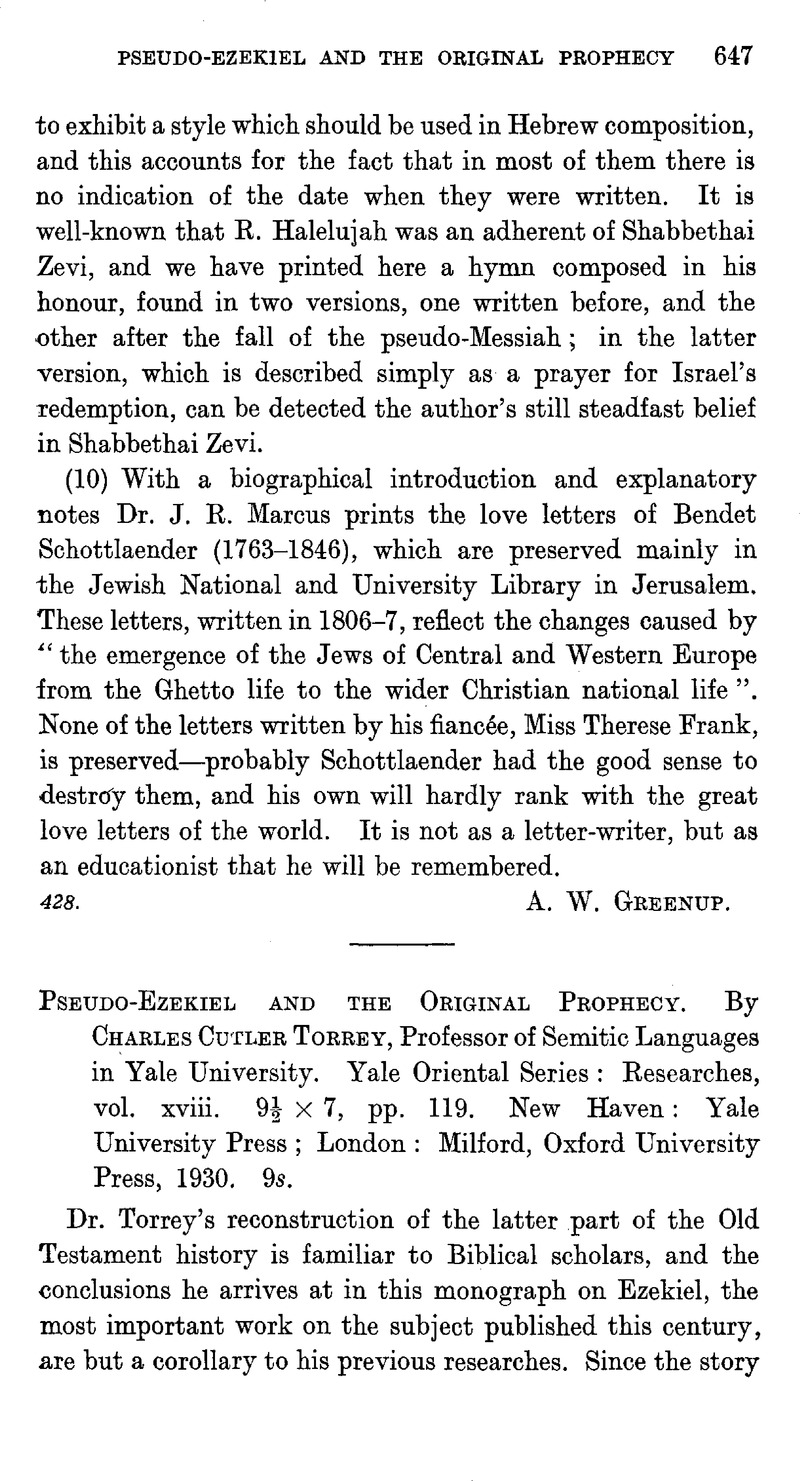No CrossRef data available.
Article contents
Pseudo-Ezekiel and the Original Prophecy. By Charles Cutler Torrey, Professor of Semitic Languages in Yale University. Yale Oriental Series: Researches, vol. xviii. 9½ × 7, pp. 119. New Haven: Yale University Press; London: Milford, Oxford University Press, 1930. 9s.
Published online by Cambridge University Press: 15 March 2011
Abstract

- Type
- Notices of Books
- Information
- Copyright
- Copyright © The Royal Asiatic Society 1932
References
page 648 note 1 See Hyman, , Toldoth Tannaim v'Amoraim, ii, 506, col. 1Google Scholar.
page 648 note 2 See Streane, , Chagigah, p. 71, note 1Google Scholar.
page 648 note 3 On this term, see Moore, , Judaism, i, 247Google Scholar.
page 649 note 1 Cambridge Bible, 1892, on c. iii, 11. Kraetzschmar, 1900 (quoted by Torrey, p. 30), uses similar language.
page 649 note 2 See on this the interesting essay by Buttenwieser in the Hebrew Union College Annual, vol. vii, 1930, pp. 1 ffGoogle Scholar.
page 651 note 1 See Rashi, Ḳimhi, Tanḥuma, Ki Thetse, § 10. Many of Ezekiel's expressions are coarse to Western ears. The Massora on ![]() in this verse notes:
in this verse notes: ![]() . I observe that Kent, C. F., in The Student's Old Testament, 1910Google Scholar, follows the Jewish traditional interpretation.
. I observe that Kent, C. F., in The Student's Old Testament, 1910Google Scholar, follows the Jewish traditional interpretation.




